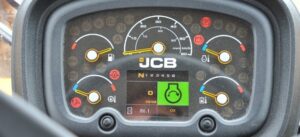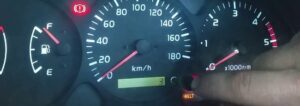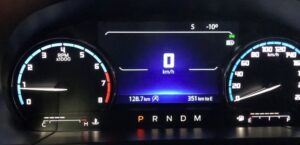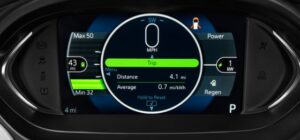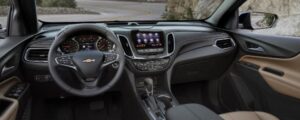Forward collision avoidance is one of the most important safety features on cars today. If you ever get into a car accident, it’s essential that your car can avoid hitting other vehicles in front of it. One of the ways your car does this is by using Hyundai Forward Collision Avoidance Assist Warning Light.
In this article, we will explore what these lights are and how they work. We’ll also discuss some common problems with them and how to fix them.
Recommended article: Headlight Warning Light Hyundai
What is the Hyundai Forward Collision Avoidance Assist Warning Light?

The Hyundai Forward Collision Avoidance Assist Warning Light will illuminate when the car is in danger of colliding with something in the rear. This warning can help the driver avoid a collision, and it’s usually accompanied by an audible alarm. The Forward Collision Avoidance Assist Warning light will turn off once the car has passed safely by the object that was causing the warning.
See also: Hill Start Assist Warning Light
Hyundai Forward Collision Avoidance Assist Warning Light Fault

The Hyundai Forward Collision Avoidance Assist Warning Light is a warning light that will illuminate when the car senses an impending collision. The Forward Collision Avoidance Assist Warning Light is designed to help drivers stay aware of the situation around them and prepare for corrective action. If you are experiencing problems with your Hyundai Forward Collision Avoidance Assist Warning Light, there are a few things that you can do to troubleshoot the issue.
Read also: Why Is My Forward Collision Warning Light On
There are a few common causes for the Forward Collision Avoidance Assist Warning Light to fail. One common reason for the light to turn on is if there is a fault with the sensor that detects objects in front of the car. If this sensor is not working correctly, the light will turn on and warn drivers about potential danger ahead. In addition, if there is a problem with the wiring or connectors associated with the warning light, it may turn on even if there is no problem with the sensor. If you are experiencing problems with your Hyundai Forward Collision Avoidance Assist Warning Light, it is best to take it in for a checkup so that the issue can be fixed quickly.
When the Hyundai Forward Collision Avoidance Assist Warning Light Comes On?

The Forward Collision Avoidance Assist Warning light on a Hyundai car will activate if the car senses that it is about to hit another vehicle, and will give drivers a warning before the collision. This system uses sensors to track the movement of other cars around the Hyundai, and will activate the warning if it detects that there is a high risk of collision. If drivers do not react to the warning, the Hyundai’s automatic braking system will help avoid a crash.
If your Hyundai Forward Collision Avoidance Assist Warning Light comes on, it means the automatic system is detecting a potential collision and is warning you. Usually, this light will come on when you’re approaching or passing another car and it’s important to take note of the warning so you can react quickly. If there’s anything you can do to avoid the collision, do so. If there isn’t a way to avoid the collision, follow the car in front of you until the light goes off or until you reach your destination.
In this article, we took a look at the Hyundai Forward Collision Prevention Assist Warning Light. We discuss what it is and why you might need to replace it. We also give you some tips on how to replace it if necessary. Finally, we answer some common questions about the warning light. Stay tuned! You can leave us a comment if you like.
What is Hyundai forward collision avoidance assist?
Hyundai’s Forward Collision-Avoidance is an advanced system designed to mitigate the severity of, or even prevent, a forward collision. The technology utilizes a high-resolution camera that scans the road ahead for potential hazards and issues an audio alert when it detects something in its path. If necessary, the brakes will be applied automatically by this safety feature to minimize any possible damage associated with a frontal impact. This cutting edge system has been developed by Hyundai in order to further enhance their commitment to driver and passenger protection.
How does Hyundai collision avoidance system work?
The Lane Keeping Assist (LKA) system is an advanced safety feature designed to reduce the potential for collisions. Utilizing a vehicle-mounted camera, LKA can detect when the vehicle drifts outside of its intended lane without a turn signal and alert the driver through clear visual warnings, audible alerts and vibrating patterns on the steering wheel. This combination of warnings helps to quickly inform drivers of potentially hazardous situations, allowing them to take corrective action before any damage or injury occurs.
Does forward collision warning stop your car?
Forward collision warning is a valuable asset in the automotive industry. It can alert drivers of an impending collision with a slower moving or stationary car in front of them. This system is designed to give drivers adequate time to brake or swerve accordingly and avoid any potential accident. However, it should be noted that forward collision warning does not automatically apply brakes for the driver; it simply alerts them so they may take appropriate action on their own behalf.
Does Hyundai have automatic braking?
Hyundai vehicles offer a wide range of options for their customers, from coupes to crossovers and hatchbacks to sedans and sport utility vehicles. All these vehicles come with Hyundai’s anti-lock braking system (ABS) as standard, which helps drivers maintain control in slippery conditions by reducing the vehicle’s stopping distance. ABS is designed to increase safety on the road, especially during emergency maneuvers.


